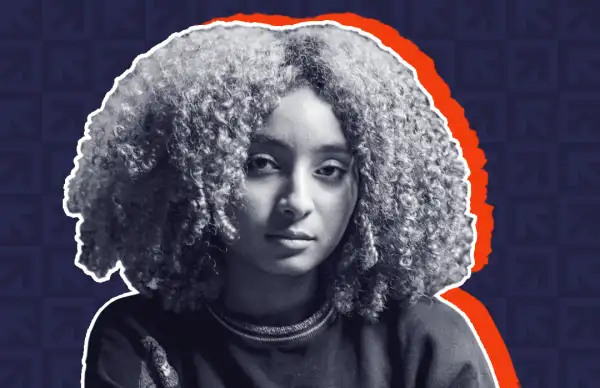Diana Sinclair

Teaming up with Whitney Houston’s estate on a video that sold for nearly $1 million, being the launchpad for auction house Christie’s NFT platform and snagging a spot on Meta’s list of “creators of tomorrow” are impressive accomplishments for one lifetime.
Diana Sinclair has done them all as a teenager.
Sinclair is a visual artist making a big name for herself in the NFT space, which she entered in 2021 — just as non-fungible tokens were exploding in popularity.
NFTs are digital assets on a blockchain. Think: music, sports trading cards or, like in Sinclair’s case, artwork. NFT sales skyrocketed to more than $17 billion in 2021; the digital assets were seemingly everywhere, from Coca-Cola to Coachella to celebrities’ social media feeds. Since then, trading volumes of NFTs have tanked and excitement has fizzled.
But that hasn’t stopped Sinclair, who’s used NFTs — and her immense talent — to launch a successful career and forge a path for other Black artists. As part of her efforts to introduce the Black community to NFTs, last year Sinclair curated “The Digital Diaspora,” a Juneteenth art exhibition in New York City that celebrated the work of Black artists.
“When I started in the NFT community over a year ago, it was clear that Black art or anything representing visible Blackness was not nearly as valued as the art that didn’t,” Sinclair said when she was featured by Instagram in June. “The project created safe space for Black artists in Web3 where there was none.”
This fall, Sinclair debuted Phases, a 9-piece NFT collection that, in her own words, “explores our relationship to time and impermanence in life through digital art.” Phases kicked off Christie’s 3.0, the world-renowned auction house’s NFT platform, and sold out at a price point of 66.77 ETH, or the equivalent of about $86,000 (as calculated using ether’s price in early December).
Many of Sinclair’s pieces are portraits, using both photography and video to exhibit a deeper meaning. “I Am That I Am,” for example, uses light, bright blue and a child’s face in “representing the personification of Being” (“children are much more likely to believe in their innate goodness and to have faith in themselves,” the description reads). Meanwhile, “Doomsday” is a generative video NFT of a woman posing amid a bustling crowd; per its description, it “updates yearly at the end of January as affected by the doomsday clock.”
“The blockchain opens up unique opportunities to create works that can change and be interactive,” Sinclair said in September, adding that she hopes it will “generate more positive criticism of digital art, showing the use cases for communicating really intense and complicated concepts.”
The daughter of a writer and artist-slash-software developer, Sinclair spent her childhood and teenage years drawing on an iPad before shifting to charcoal, watercolor, acrylic, photography and filmmaking. Fast forward a few years, and Sinclair has now signed with United Talent Agency, which represents bona fide celebrities like Malala Yousafzai, Lizzo and Bo Burnham. Lesley Silverman, the head of UTA Web3, has called Sinclair a “visionary.”
Sinclair draws her inspiration from “anything and everything,” she said on the podcast nft now in June, including films, articles, TikToks and music videos (one of her favorites is the visual film from Solange’s album When I Get Home).
Those sources have sparked ideas that have led to tons of impressive work. But as Sinclair told Christie’s, she thinks “there's so much more that can be done in this space.” The next Renaissance, she believes, will come from the intersection of art and technology — and you can bet her work will be a part of it.
